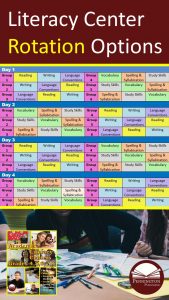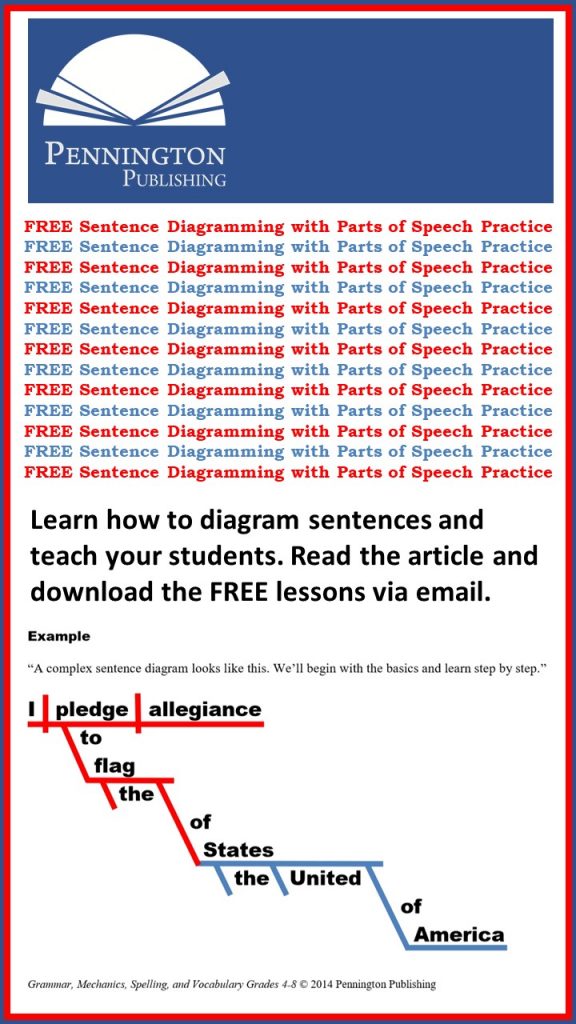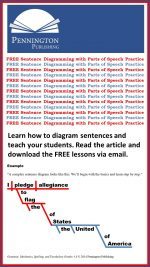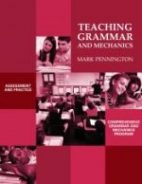Literacy Center Rotations
More and more, teachers are seeing the value of using literacy centers (or stations, if you prefer) and the literacy center research certainly supports the use of small groups and centers in the classroom. However, there are certain challenges to setting up effective literacy centers. Many teachers explore the option, or even try to initiative centers, but quickly get frustrated and give up. Many do so because of behavioral issues, but others do so because of organizational problems. My take is that both go hand in hand.
I’m writing this article because every teacher has unique needs regarding setting up their own literacy centers. Setting up workable literacy center rotations to meet those needs can be challenging, especially for the spatially-impaired, like me. For this article, rotations refers to which literacy centers students move and when. Obviously, you can’t have all of your kids moving to the same literacy station at the same time. Following are rotation limitations, rotation options, and rotation transitions to make your literacy center planning easier. Of course, these are not the only options, but others can certainly be modified from the ones I will provide. Plus, clink on each link to find colorful visuals for each rotation option.
Rotation Limitations
Time
With respect to instructional time, I’ve never heard a teacher complain about having “way too much time in the day” to teach. This is especially true with respect to literacy centers (or stations). Instructional decisions are always reductive. In choosing to do literacy centers, you are choosing not to do another instructional approach or learning activity. The question will be how much time you are able to devote to literacy centers.
Most teachers opt for 20-minute literacy centers. This seems to be about the length of time students can handle independent work and the amount of time teachers usually spend doing guided reading or other teacher-led activities for literacy centers. To facilitate rotations, this means that the total amount of class time devoted to literacy centers would be 40, 60, 80, or 120 minutes. This would be true for both elementary and secondary teachers (the latter depending upon traditional for the 40 or 60 and block for the the 80 or 120 minute schedules).
Class and Group Size
Most educational researchers and teachers find that groups of 3-6 students are the ideal size for collaborative small groups, such as for literacy centers. With a class size between 20-26 for elementary teachers, 4, 6, or 8 groups will work. With a class size between 26-40 for secondary teachers, 6 or 8 groups will work.
Number of Days
Generally speaking, the fewer number of days doing literacy centers requires more rotations. Conversely, more days alloted to literacy centers permits fewer rotations.
Number and Types of Literacy Centers
As with the number of days, more literacy centers require more days and more rotations. The rotation options below show from 4-10 literacy centers. These rotation options provide guide choices. In other words, students are required to rotate to specific centers, but have limited choices of lessons or activities within each center. Some teachers have set up more centers if free choice is permitted.
Additionally, if teachers wish to do guided reading or other teacher-led activities for literacy centers, rotation options will be limited because the teacher becomes, in effect, a literacy center herself. You can’t be everywhere at once! Three guided reading options are provided in the following rotations. One includes *guided reading for 20 minutes per day, four days per week; another includes **guided reading for 20 minutes per day, two days per week; one more includes ***guided reading for 10 minutes per day, four days per week.
Rotation Options
- 40 minutes
- 60 minutes
- 80 minutes
- 100 minutes
Check out these 10 Literacy Center Rotations
Rotation Transitions
Before launching literacy centers in your classroom, I strongly suggest practicing rotation transitions. Make sure to clearly post or display rotation transitions for student reference. Provide some form of signal, such as a chime, lights on or off, or clap-clap back to announce movement. Make sure that the clock is visible so the students, or an assigned task manager, can monitor the time for each center lesson or activity and help the group wrap-up to provide a quick and quiet transition. Also practice set-up, tear-down, and clean-up procedures.
Students love to be timed and positive reinforcements work well to teach time management skills.
The following programs utilize small groups for “second chance” phonemic awareness and phonics lessons:

The Science of Reading Intervention Program
The Science of Reading Intervention Program: Word Recognition includes explicit, scripted instruction and practice with the 5 Daily Google Slide Activities every reading intervention student needs: 1. Phonemic Awareness and Morphology 2. Blending, Segmenting, and Spelling 3. Sounds and Spellings (including handwriting) 4. Heart Words Practice 5. Sam and Friends Phonics Books (decodables). Plus, digital and printable sound wall cards and speech articulation songs. Print versions are available for all activities. First Half of the Year Program (55 minutes-per-day, 18 weeks)
The Science of Reading Intervention Program: Language Comprehension resources are designed for students who have completed the word recognition program or have demonstrated basic mastery of the alphabetic code and can read with some degree of fluency. The program features the 5 Weekly Language Comprehension Activities: 1. Background Knowledge Mentor Texts 2. Academic Language, Greek and Latin Morphology, Figures of Speech, Connotations, Multiple Meaning Words 3. Syntax in Reading 4. Reading Comprehension Strategies 5. Literacy Knowledge (Narrative and Expository). Second Half of the Year Program (30 minutes-per-day, 18 weeks)
The Science of Reading Intervention Program: Assessment-based Instruction provides diagnostically-based “second chance” instructional resources. The program includes 13 comprehensive assessments and matching instructional resources to fill in the yet-to-be-mastered gaps in phonemic awareness, alphabetic awareness, phonics, fluency (with YouTube modeled readings), Heart Words and Phonics Games, spelling patterns, grammar, usage, and mechanics, syllabication and morphology, executive function shills. Second Half of the Year Program (25 minutes-per-day, 18 weeks)
The Science of Reading Intervention Program BUNDLE includes all 3 program components for the comprehensive, state-of-the-art (and science) grades 4-adult full-year program. Scripted, easy-to-teach, no prep, no need for time-consuming (albeit valuable) LETRS training or O-G certification… Learn as you teach and get results NOW for your students. Print to speech with plenty of speech to print instructional components.
Grammar/Mechanics, Reading, Spelling/Vocabulary, Study Skills, Uncategorized, Writing









